Carp and carp are the closest relatives, while they are often found in the same reservoir, they have almost the same appearance and lifestyle. Both are popular fish for their delicious meat. But a fisherman who purposefully
fishing on carp should know how carp differ from carp, and carp from crucian carp and grass carp and understand the peculiarities of the behavior of these fish.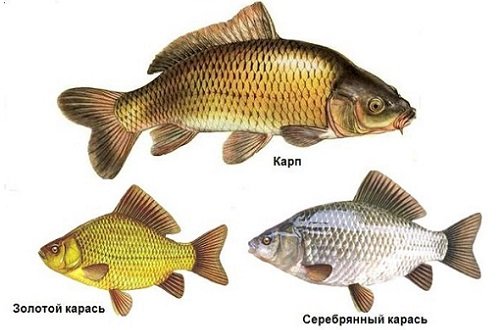
- General information about carp and carp: differences in appearance with a photo of the “main” representatives of carp
- Carp varieties
- Varieties of carp
- Difference in appearance
- Differences in behavior and habits
- Places of residence
- Differences in taste
- The difference between carp and grass carp (love carp)
- What is the difference between carp and carp from crucian carp
- Conclusion – we are looking for the difference quickly and accurately right on the pond
- Поделиться ссылкой:
General information about carp and carp: differences in appearance with a photo of the “main” representatives of carp
Carp is a domesticated species of
carp , that is, in this case, almost identical fish are considered, which belong to the group of cyprinids – Cyprinus carpio.


Carp varieties
In a carp, the body is completely covered with scales, its color will depend on the peculiarities of residence. On the belly, the scales are lighter than on the back, while the contrast only increases with age. Taking into account the place of spawning, the following varieties are distinguished:
- Semi-anadromous carp . This variety is characterized by the fact that when spawning is sent from the seas to the rivers.
- Residential . Lives in rivers or seas, where rivers flow, in which the water is more fresh. Spawns in the same places in which he lives.
Varieties of carp
Human selective selection pursued the task of removing a species of fish from carp that could be easily bred on a commercial scale. This is how the carp appeared. There are such varieties of this fish:
- Naked carp . There are practically no scales on the body of this fish, which makes it different from mirror and ordinary carp. It is not found so often, while it is a poorly adapted subspecies for living in an environment that is as close to natural as possible.
- Mirror . The difference from mirror carp from ordinary carp is the absence of scales on the main part of the body – it is located on the back, near the gills, tail and along the midline of the body. It can also be seen infrequently, while it is generally smaller in size than usual.
- Common (scaly) . This subspecies is very similar to the carp, since their appearance has a lot in common – there are scales on the whole body of the carp, its color significantly depends on living conditions – from golden to bright brownish.
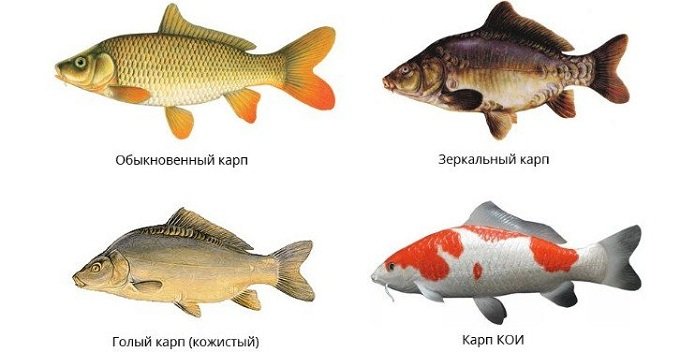
Difference in appearance
One way or another, there is something that distinguishes the carp from the carp externally. If you look closely, you can see that the carp’s body is more elongated, which is explained by the conditions of its residence – the fish mainly chooses rivers with the current, in which, during the search for food, it is required to overcome significant resistance. Moreover, the carp grows in length much longer, in contrast to the carp, since the latter, upon reaching a certain size, further increases in breadth. With the same weight, carp is much longer than carp. All scales of the carp are dark, while in the carp they are of a monochromatic light color.
Important: The carp’s head is disproportionately large in comparison with the body. A professional fisherman certainly knows exactly how to distinguish carp from carp in appearance, taking into account this sign.
Also, a big difference between carps and carps is the presence of a small tubercle near the base of the head at the first, while the wild species does not have it.
Differences in behavior and habits
The carp predominantly lives in its natural environment, this is reflected in its behavior. The fish is much more careful, unlike the carp, since it has many enemies in the rivers, while the second does not need to hide from predators for the entire first year of life. That is,
when a carp is nesting, it is necessary to carefully observe the silence mode and choose the right camouflage. The daily diet of these fish is also slightly different –
carp in springnot infrequently feeds on caviar of other fish species, and in some cases, if there is very little food in the reservoir, then it does not disdain even fry. At the same time, carp prefers to feed on vegetation more, this is due to artificial feeding in the ponds where this fish is grown. During breeding, carp acquired such a distinctive feature as increased fertility, while the carp has much fewer eggs during the spawning period, and it is much more demanding on the conditions of the spawn.
Places of residence
The habitats of these two species of fish also differ. Carp are not so picky about the presence of oxygen in the reservoir, 5 mg per liter of water is enough for it, this makes it possible for the fish to live and grow well even in small ponds, where the water is stagnant. At the same time, the carp is much more sensitive to the presence of oxygen – this fish needs at least 8 mg per liter of water, which is why it chooses rivers with a strong current. Carp is much more thermophilic than carp and is more common in the southern regions. The optimal temperature for him in the reservoir is 26 degrees above Celsius, and closer to the southern regions his population is much larger than carp. The latter can live at lower temperatures.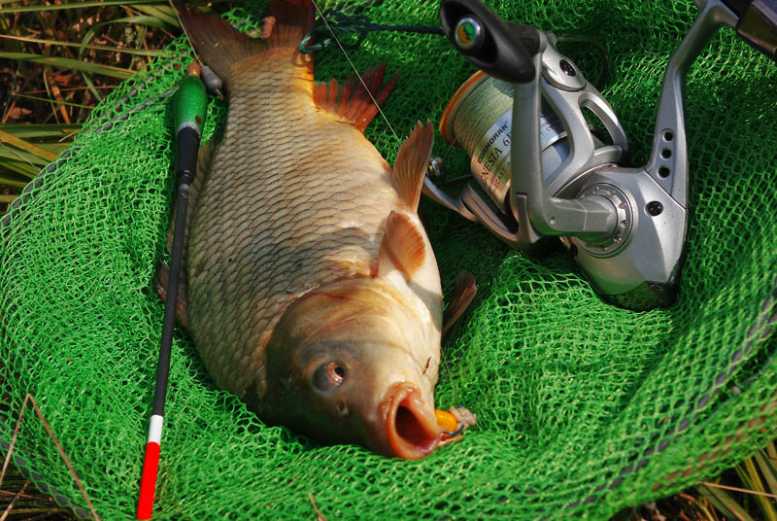
Differences in taste
There are practically no actual differences in taste between carp and carp. The meat of these fish is low in calories and often belongs to dietary products. But traditionally, culinary experts consider carp meat to be much tastier, in contrast to a domestic relative, but even a gourmet cannot determine significant differences. Carp meat is dietary, it is tender and juicy, slightly sweet in taste.
The difference between carp and grass carp (love carp)
Although carp also belongs to carp fish, there are still certain differences with carp. The main difference between grass carp is that its body is much longer, its head has a flattened shape, there are stripes on the gills, and its eyes are framed in yellow. The grass carp can grow up to 130 cm in length and weigh over 50 kg, it grows faster and already at 7-8 years old it can reach a length of 80 cm, then it begins to spawn.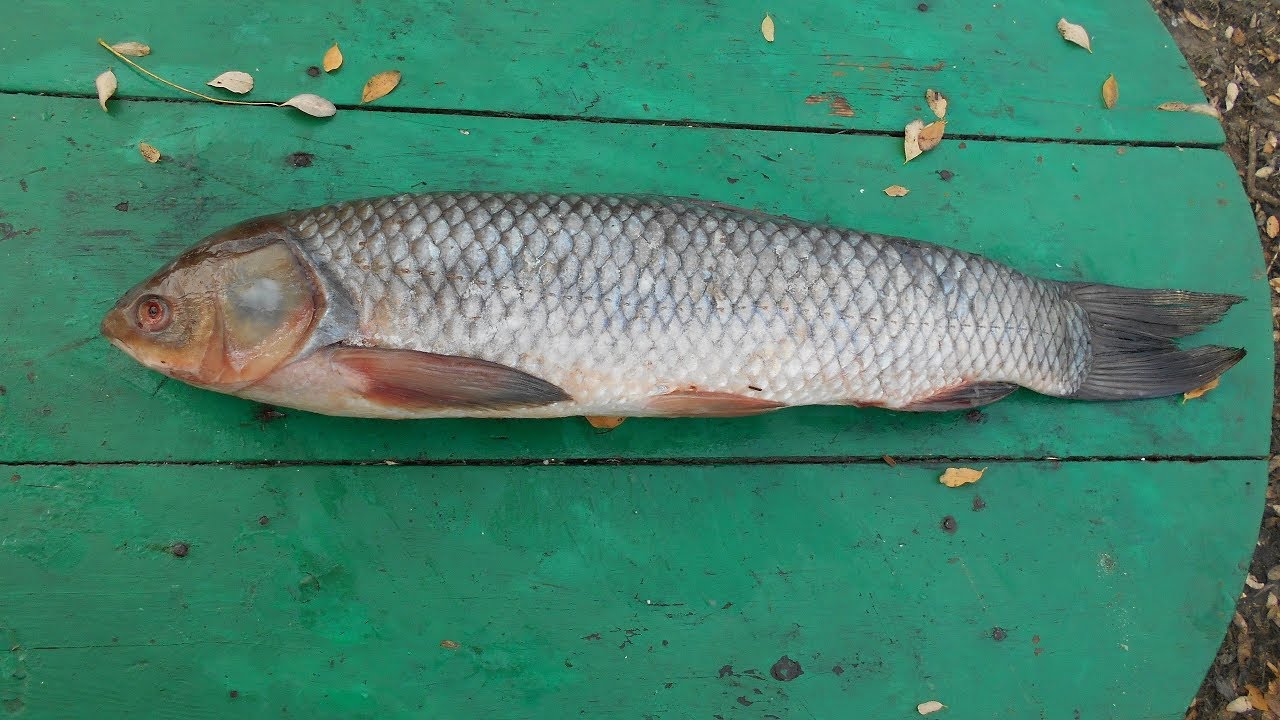
What is the difference between carp and carp from crucian carp
First of all, what you should pay attention to when looking for differences is that the carp is characterized by the presence of whiskers, while the crucian carp does not. Also, the structure of the head in crucian carp is simpler, without a tubercle near the base. The lips of a carp are much fleshy than that of a younger relative. The body of the carp is wide; in the crucian carp it is taller and narrower. Also, carps grow much larger in size, and in terms of weight, adult specimens are much larger than even a very large crucian carp. The main difference between carp and crucian carp is the head, in wild carp it is much more massive and disproportionate to the body than in crucian carp. At the same time, the carp has larger mouths, the lips are compacted and yellowish in color. The most distinctive feature, as in the case of carp, is the small antennae in the carp that grow at the corners of the mouth. They are completely absent in crucian carp. The carp has a low-slung torso,at the same time, the carp’s body has a high shape. The dorsal fin in the second is small in size and almost even; in the first it is much longer.
Conclusion – we are looking for the difference quickly and accurately right on the pond
To identify a trophy right there on a fishing trip, you should pay attention to the following signs:
- Head . In the carp, it is larger, in contrast to the carp, while the latter has a tubercle near the base.
- The shape of the body . In the carp it is elongated, in the carp it is thick.
- Habitat . The carp prefers exclusively flowing water bodies, therefore it is not recommended to catch it in shallow ponds where there is no current.
- Scales . The carp has all the scales of the same color, while the carp has a dark frame on it.
Catching these fish is almost the same – since the preferences in nutrition and behavior are much similar, but the carp is more careful during feeding, it is more frightened by various sounds, therefore, it is necessary to observe the silence mode. Do not forget about camouflage – this greatly increases the chances of catching this fish.
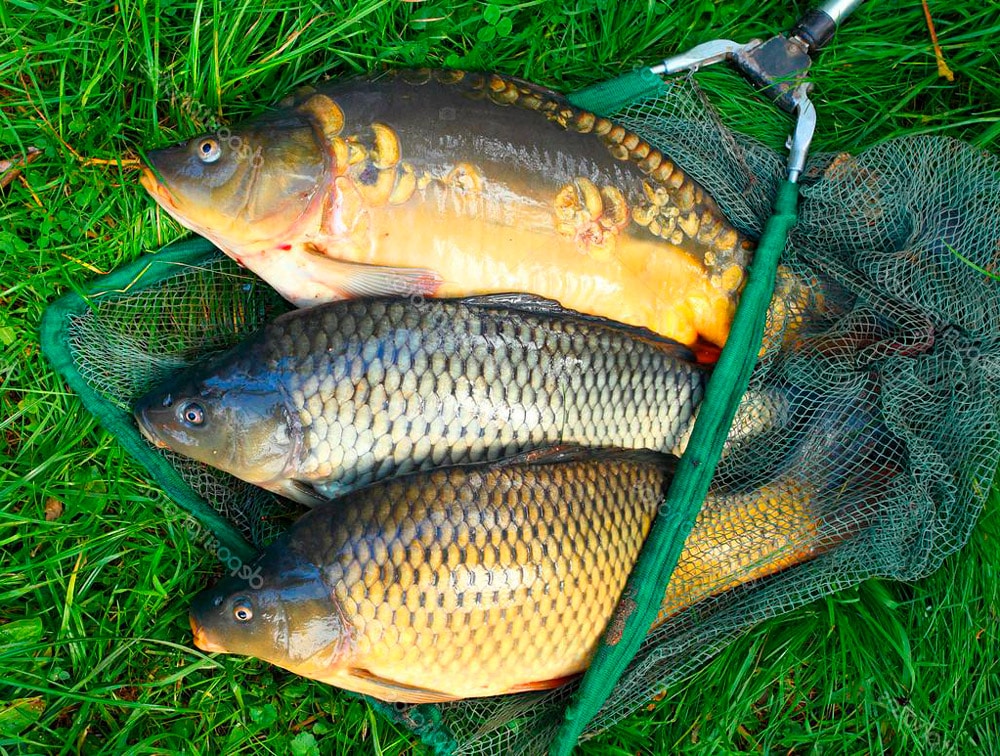
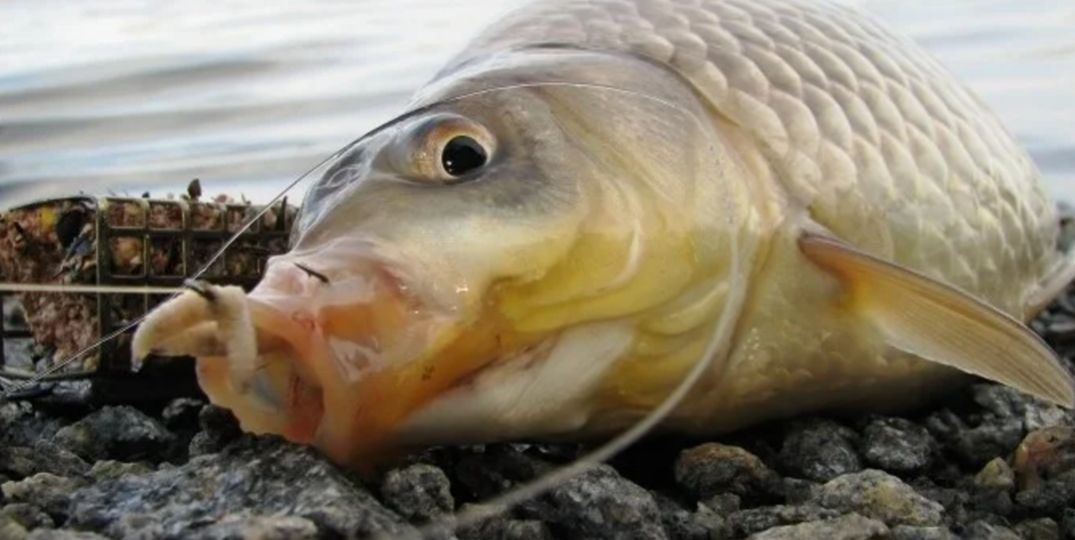
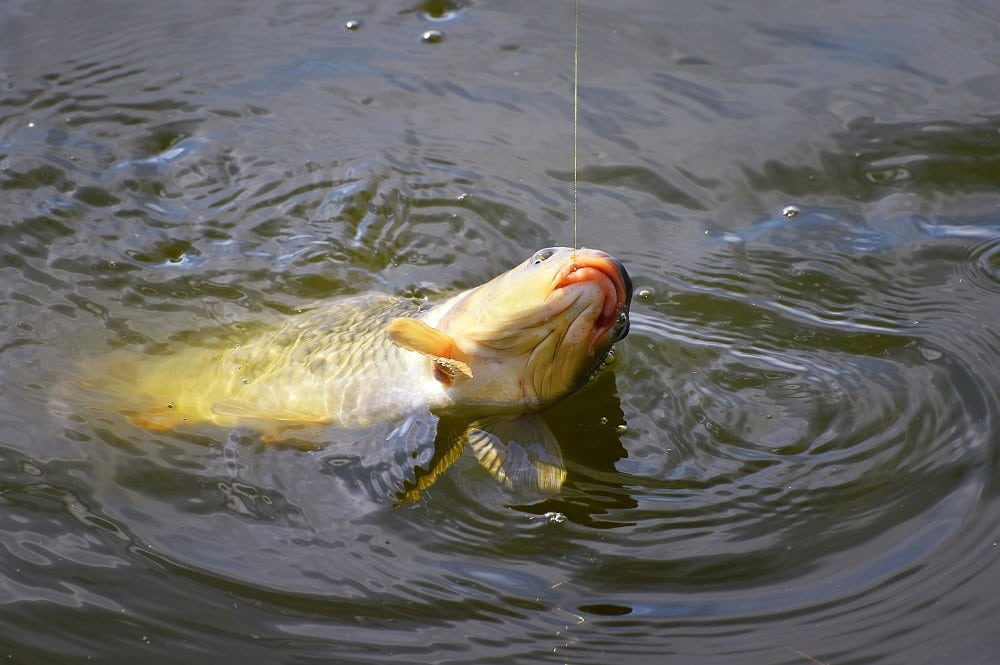


Vô nghĩa viết cá chép và cá chép , lặp lại nhiều lần nên người đưa đề bài này chỉ chép theo lời dịch từ ngôn ngữ khác mà chẳng hề coi lại ! ZERO
როგორ განვასხვავო დედალი კობრი მამრისგან?